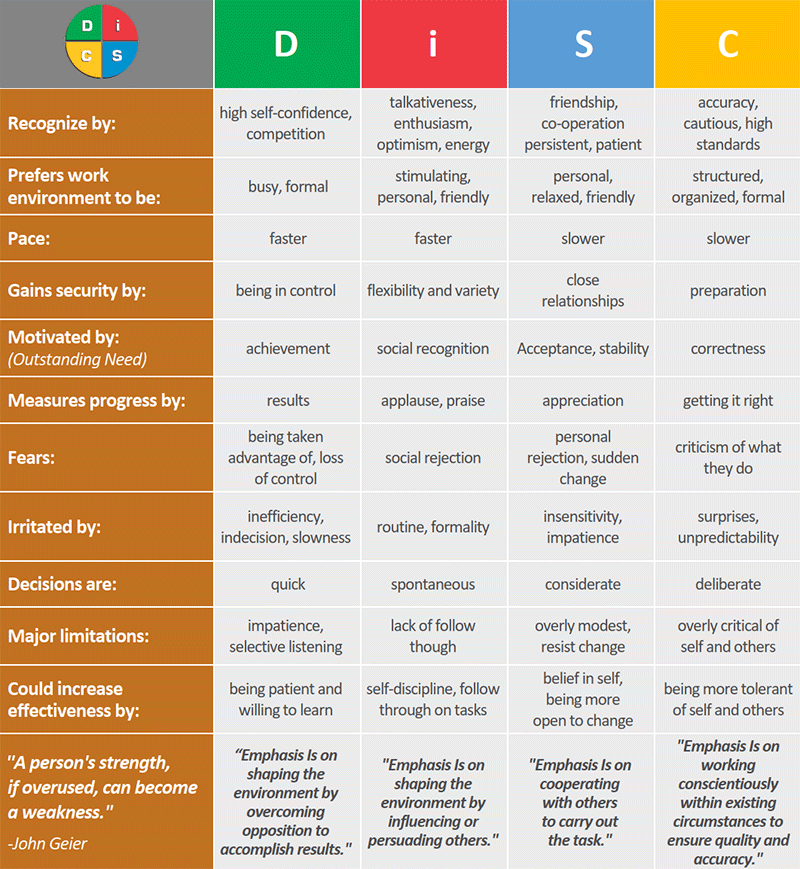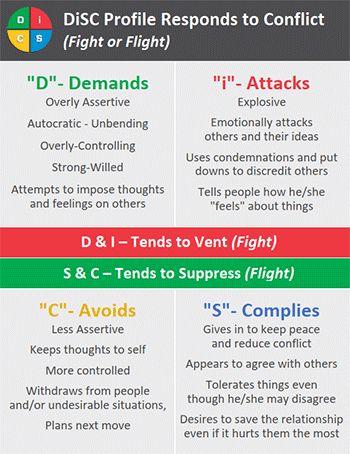On This Page
Family Business Communications
Effective communications are essential for any healthy relationship and foundational for effective family business planning to occur. Northwest FCS’ business planning process begins with helping family business members understand their own and others’ communication styles.
Northwest FCS Strategic Planning Audio Series
Family Business Communications with Ben Showalter and Michael Stolp
Overview and Objectives
After completing this guide, participants should:
- Have a basic knowledge of behavioral preferences.
- Recognize the similarities and differences among individuals and the importance of understanding yourself and others.
- Appreciate individual strengths and adapt behavior to create more effective communications.
- Know how to get help and additional resources from Northwest FCS.
There are many types of behavioral assessments available that can be useful in guiding these conversations to identify behavioral and communication preferences. This guide uses concepts from the DiSC assessment which is grounded in decades of behavioral research and utilized by millions of individuals and companies each year.
Behavioral Styles
The DiSC Model of Behavior was first proposed in 1928 by William Moulton Marston, a physiological psychologist, in his book Emotions of Normal People. From his research, Marston theorized that the behavioral expression of emotions could be categorized into four primary types or styles, stemming from the person’s perceptions of self in relationship to their environment. His research demonstrated that an individual’s behavior tends to be predictable in terms of preferences in conversational tone, gestures, words, decision-making, problem solving and dealing with conflict. Every individual has a unique “style” or blend of styles that represent an opportunity to leverage strengths and understand weaknesses. The four primary styles are described at a high level below:
- Dominant: People who have both outgoing and task-oriented traits often exhibit dominant and direct behaviors. They usually focus on results, problem-solving and the bottom-line.
- Influence/Inspiring: People who have both outgoing and people-oriented traits often exhibit inspiring and interactive behaviors. They usually focus on interacting with people, having fun, and/or creating excitement.
- Steady/Supportive: People who have both reserved and people-oriented traits often exhibit supportive and steady behaviors. They usually focus on preserving relationships and creating or maintaining peace and harmony.
- Conscientious/Careful: People who have both reserved and task-oriented traits often exhibit cautious and careful behaviors. They usually focus on facts, rules and correctness.
No DiSC style is "better" than any other. These categories simply help individuals find out which style they tend to gravitate toward most — their comfort zone. With that knowledge, individuals, teams and family members can understand their underlying tendencies and preferences. This provides an opportunity to understand themselves better and adapt behaviors to interact with others more effectively. Effective work teams share appreciation for all styles and optimize each other’s strengths and weaknesses.
Assessing Your Own Style
Understanding DiSC styles begins with taking a short online assessment. The assessment provides a report showing where an individual “fits” into the four main personality types. Click here to access the Everything DiSC Workplace® assessment for a small fee.
Alternatively, families may simply use the table below to review each behavioral style. Often times, a self-assessment can be performed by identifying the descriptions outlined below that most strongly align with one’s own preferences.

Dealing with Conflict
Using DiSC to understand preferences in behavioral expression is especially helpful to navigate conversations where conflict may arise. Most unproductive conflict that occurs between people, and the subsequent reduction of productivity, is due to a lack of awareness of behavior style differences and communication preferences. Understanding and valuing each style enables individuals to recognize common responses to conflict.
- Understand individual tendencies
- Recognize how they are different,
- Adapt behavior to create more effective communication,
- Reduce stress and lead to more constructive outcomes.

Group Discussion Guide
Including all family members and spouses in these discussions is important to ensure transparency, understand all perspectives and to maintain family relationships.
Prepare Participants
- Schedule a dedicated time (1-2 hours depending on the group size) for a focused discussion.
- Provide this Family Business Communication Guide to all participants.
- Recommend listening to the Family Business Communication episode of the Northwest FCS Strategic Planning audio series prior to meeting.
- Consider having all family members complete a DiSC behavioral assessment to share during the session.
Define Roles
- Identify a facilitator to keep the group focused and moving through the discussion.
- Designate one person to take ‘official’ notes, documenting the discussion and any decisions.
- Review the meeting ground rules in the Family Business Basics discussion and verify agreement or possible changes.
Instructions
- If you ordered a DiSC report, read it in advance of the family meeting. Highlight what resonates most with you from the report and come prepared to share during the meeting.
- Use the questions below to inventory family perspectives together. Assess milestones and lessons learned and reflect upon how they may be applied to the future.
- Why is understanding each other’s behavioral style and communication preferences important?
- What behavioral styles are in our family business? (Note: Each participant should share their behavioral style assessment and what is most like them).
- What do you appreciate most about each other’s DiSC styles?
- How might a strength be overused and what can be the result?
- What communication preferences work best with your style?
- How does each behavioral style deal with conflict most effectively?
- How might you adjust your behavioral style to work more effectively with others?
- What can we do collectively to make our communications more effective as a family and family business?
- What is the next step in the process (see recommended steps below) and when should we meet again?
Recommended Next Steps
- Schedule a dedicated time (1-2 hours depending on the group size) for a focused discussion on Family Business History and Timeline.
- Listen to the Family Business History and Timeline episode of the Northwest FCS Strategic Planning audio series.
- Read the Family Business History and Timeline Guide.
Please share your feedback! Click Here to complete a short two-minute evaluation of these business resources.